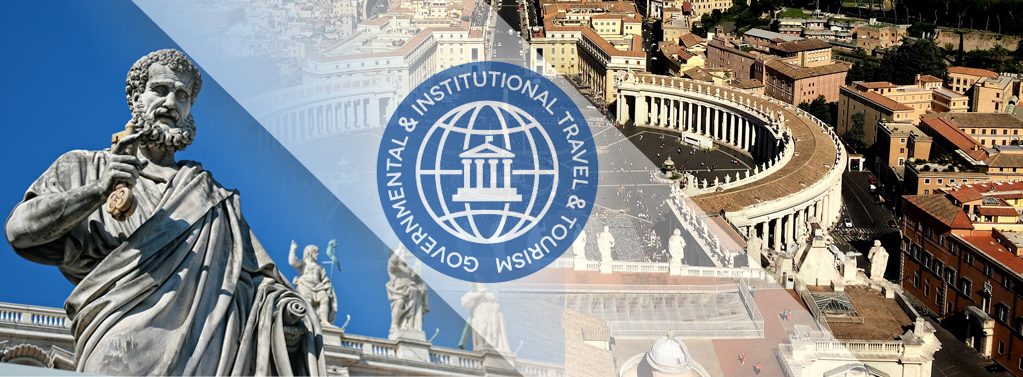
Vatican City, officially Vatican City State, or simply the Vatican, is a landlocked Sovereign State, included within the city of Rome, in Italy, but whose political, administrative, legislative, etc., characteristics are different from those of the territory where it is located. It is the smallest Sovereign State in the world in terms of size and population, and one of the six European microstates.
It is governed by a theocratic system organized as an absolute monarchy, which makes it the only theocracy in the world, as well as the last absolute monarchy in Europe.
All this is due to the fact that Vatican City houses the Holy See, i.e. the highest institution of the Catholic Church. Often, both the expression "Holy See" and "Vatican City" are used as equivalents, but in fact, the former refers to the institution itself that directs the Church and the latter to the city and its territory, which give temporal and sovereign support to the activity of the Holy See.
Thus, the Holy See, as an institution, has its own legal personality as a subject of International Law and it is precisely the Holy See that maintains diplomatic relations with the other countries of the world. Its highest authority and head of state is the Pope, or Supreme Pontiff, who holds the three powers (executive, legislative and judicial), and delegates the functions of government to the Secretary of State.
As mentioned above, it is the Holy See, as an institution, which maintains diplomatic relations with the other States of the world, but its peculiarities as a State mean that both the protocol and various other matters differ in a special way from those of other countries.
The first differences are to be found in the name given to the governance of the State. The Holy See is ruled by a set of governing bodies called the Roman Curia. In turn, the Curia is made up of a series of institutions called dicasteries, which are under the direction of the Pope. Thus, among the various Dicasteries is the Secretariat of State which, by carrying out the political and diplomatic functions of the Holy See, is the body that collaborates most closely with the Pope in the exercise of the ministry of St. Peter.
The Vatican Secretariat of State is divided into three sections:
- The First, or General Affairs, in charge of the relations of the Universal Church with the various Dicasteries.
- The Second, or for Relations with States, which serves as the Ministry of Foreign Affairs.
- And finally, the Third, or for the Diplomatic Staff of the Holy See.
But the differences between the Vatican and the vast majority of the countries with which it maintains diplomatic relations do not end here, since the diplomatic missions also have their own specific names. The Holy See has Nunciatures, which are the highest-ranking missions and are equivalent to Embassies; and Internunciatures, lower-ranking diplomatic missions that are equivalent to Legations. Additionally, Papal Nuncios (Ambassadors of the Holy See) are privileged to be the Deans of the Diplomatic Corps in many countries, taking precedence over all other ambassadors.
In addition, the members of the diplomatic corps of the Holy See are always clerics and it is at the Pontifical Ecclesiastical Academy where they study and receive the necessary preparation for the performance of their duties. This training institution was founded in 1701 under the name of Accademia dei Nobili Ecclesiastici and since 1937 has been under the protection of the Vatican Secretary of State and directed by a president, usually of the rank of archbishop.
But, in addition, in those countries where the Holy See does not have Diplomatic Missions, but they are countries with Catholic influence, Apostolic Delegations are established to serve as a connection with the local churches of that territory. In this way, the Apostolic Delegate does not have relations with the political or state authorities of the territory, but with the local dioceses and their bishops.
On the other hand, one might think that, since Vatican City is within Italian territory, the ambassador of a country to the Vatican could be the same as the ambassador of that country to Italy. Nothing could be further from the truth! These two ambassadors must always be different people, so that both diplomatic corps, that of the Holy See and that of Italy, are perfectly differentiated.
In addition, the ambassadors of the countries to the Holy See are the only diplomatic corps that do not live within the same territory to which they represent. This is basically due to the limited space available in the Vatican State, which makes it practically impossible to establish embassy buildings there.
But one of the most curious differences in international relations with the Vatican concerns the dress code for state visits to the Holy Father. According to protocol, the visiting head of state must wear a dark suit and tie, uniform or national dress (provided that it is not excessively conspicuous), in the case of men. As far as women are concerned, etiquette recommends dark dress and mantilla, the latter being optional. But, the most remarkable and curious of the dress code for meetings with the Pope, is undoubtedly the privilege of white, which allows exclusively Catholic Queens or consorts of Catholic kings, to appear, completely dressed in white, before the Supreme Pontiff. This has lasted since the end of the XVI century, when the Pope wanted to reward the European Royal Houses that remained faithful to the Catholic Church, granting them this privilege.





